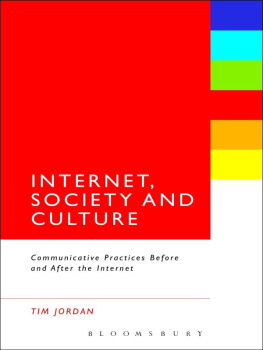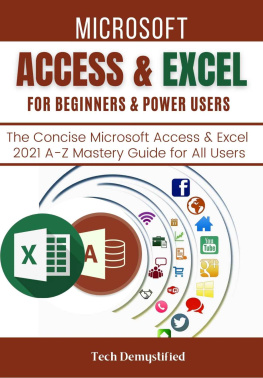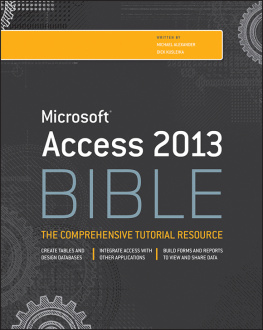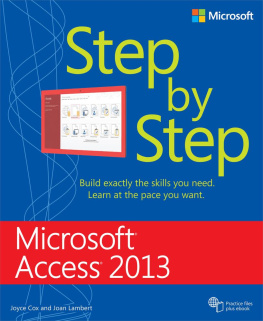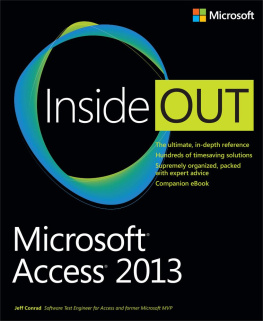Jordan - ECDL/ICDL Advanced Access: A step-by-step guide to Advanced Databases using Microsoft Access
Here you can read online Jordan - ECDL/ICDL Advanced Access: A step-by-step guide to Advanced Databases using Microsoft Access full text of the book (entire story) in english for free. Download pdf and epub, get meaning, cover and reviews about this ebook. year: 2020, genre: Home and family. Description of the work, (preface) as well as reviews are available. Best literature library LitArk.com created for fans of good reading and offers a wide selection of genres:
Romance novel
Science fiction
Adventure
Detective
Science
History
Home and family
Prose
Art
Politics
Computer
Non-fiction
Religion
Business
Children
Humor
Choose a favorite category and find really read worthwhile books. Enjoy immersion in the world of imagination, feel the emotions of the characters or learn something new for yourself, make an fascinating discovery.

- Book:ECDL/ICDL Advanced Access: A step-by-step guide to Advanced Databases using Microsoft Access
- Author:
- Genre:
- Year:2020
- Rating:4 / 5
- Favourites:Add to favourites
- Your mark:
- 80
- 1
- 2
- 3
- 4
- 5
ECDL/ICDL Advanced Access: A step-by-step guide to Advanced Databases using Microsoft Access: summary, description and annotation
We offer to read an annotation, description, summary or preface (depends on what the author of the book "ECDL/ICDL Advanced Access: A step-by-step guide to Advanced Databases using Microsoft Access" wrote himself). If you haven't found the necessary information about the book — write in the comments, we will try to find it.
Jordan: author's other books
Who wrote ECDL/ICDL Advanced Access: A step-by-step guide to Advanced Databases using Microsoft Access? Find out the surname, the name of the author of the book and a list of all author's works by series.
ECDL/ICDL Advanced Access: A step-by-step guide to Advanced Databases using Microsoft Access — read online for free the complete book (whole text) full work
Below is the text of the book, divided by pages. System saving the place of the last page read, allows you to conveniently read the book "ECDL/ICDL Advanced Access: A step-by-step guide to Advanced Databases using Microsoft Access" online for free, without having to search again every time where you left off. Put a bookmark, and you can go to the page where you finished reading at any time.
Font size:
Interval:
Bookmark:
- Understand how to create and use advanced databases
- Develop advanced relationships between tables
- Use queries such as table, update, delete and append data. Refine data using wildcards, parameters and calculations
- Develop forms and use controls to improve functionality
- Create report controls to do calculations and include subreports
- Develop macros and use linking
- Open the Car Sales database
- Find the Vehicles Query
- Run the Query
- Click the drop-down arrow on the View button and select Design View
- Click the drop down on the View button and select SQL View

- The SQL code for the query is displayed
- Click the Close button to close the SQL view
- Close the database
- Name the three types of database models.
- Give some examples of what databases are used for.
- What are the five stages of a database?
- What are some of the applications of a database?
- What is SQL and what computing platform use it?
- Open the Swift Cycles database
- Open the Bicycles table in Design View
- After the field name Telephone type in Seller
- For Data Type choose Lookup Wizard

- Choose I will type in the values that I want and click Next
Font size:
Interval:
Bookmark:
Similar books «ECDL/ICDL Advanced Access: A step-by-step guide to Advanced Databases using Microsoft Access»
Look at similar books to ECDL/ICDL Advanced Access: A step-by-step guide to Advanced Databases using Microsoft Access. We have selected literature similar in name and meaning in the hope of providing readers with more options to find new, interesting, not yet read works.
Discussion, reviews of the book ECDL/ICDL Advanced Access: A step-by-step guide to Advanced Databases using Microsoft Access and just readers' own opinions. Leave your comments, write what you think about the work, its meaning or the main characters. Specify what exactly you liked and what you didn't like, and why you think so.





